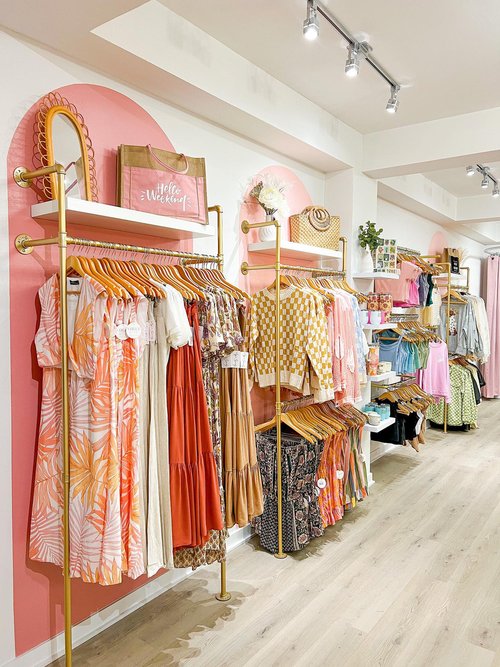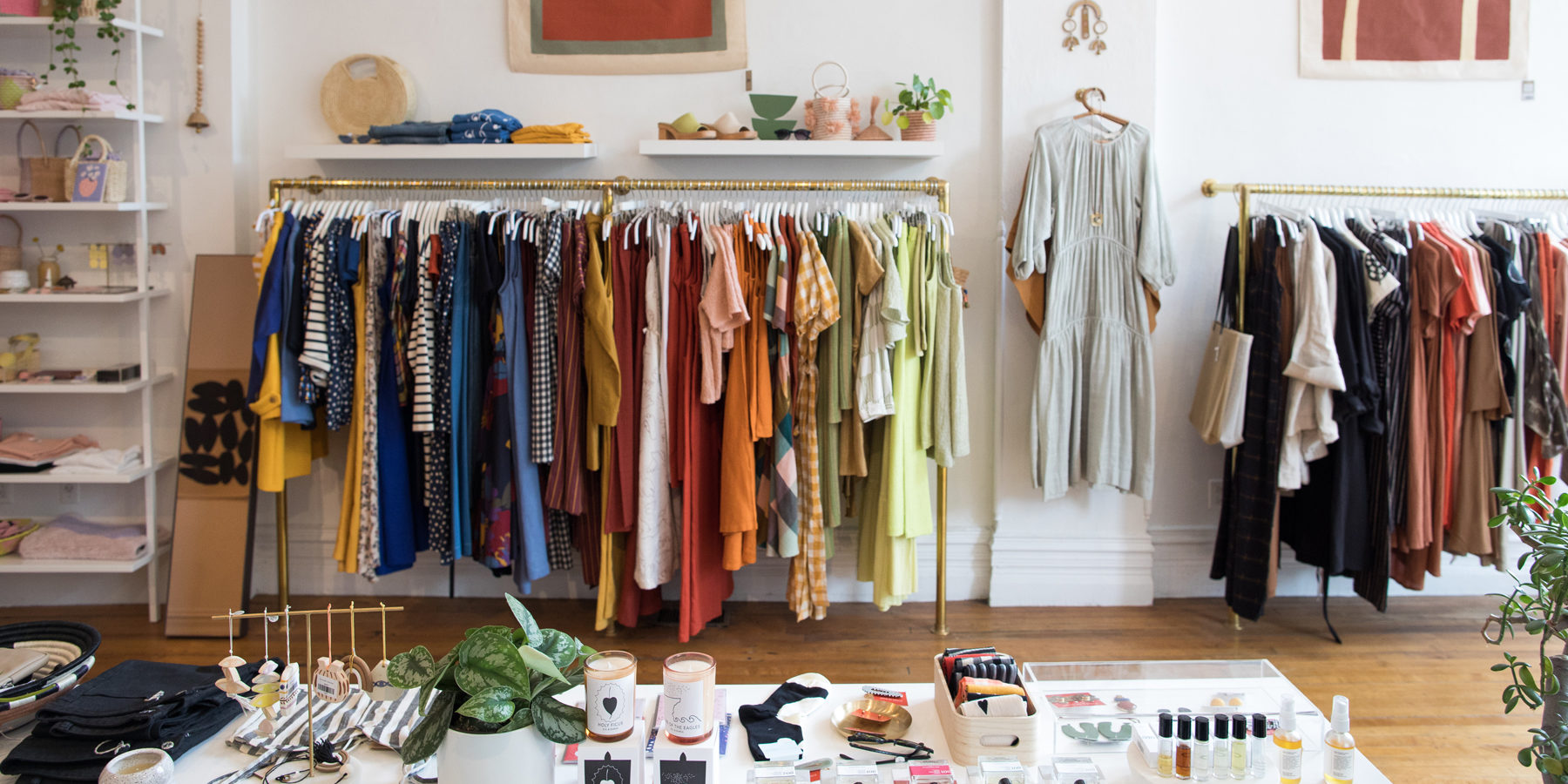A Beginner's Overview to Navigating the Boutique Fashion Scene
A Beginner's Overview to Navigating the Boutique Fashion Scene
Blog Article
Lasting Fashion: Exactly How Eco-Friendly Apparel Is Shaping the Future of Style
As the style market faces enhancing scrutiny over its ecological influence, the increase of sustainable style supplies an appealing option that aligns style with environmental responsibility. boutique fashion. How does this activity genuinely influence the future trajectory of fashion, and what challenges exist ahead in its widespread fostering?
Ingenious Lasting Products
As the style market grapples with its environmental impact, cutting-edge sustainable materials have actually emerged as an important solution for decreasing ecological footprints. These products not only reduce reliance on fossil gas yet also reduce harmful pesticide use and water intake.
Along with plant-based materials, improvements in biofabrication have actually brought about the development of lab-grown fabrics. Mycelium leather, obtained from mushroom origins, provides a eco-friendly and functional option to animal leather. Its production results in considerably lower carbon emissions and water usage, making it a much more lasting alternative for style developers looking for to line up with eco-friendly methods.
Recycled materials are also gaining traction, with polyester made from recycled plastic bottles standing for a considerable development. This development not only diverts plastic waste from oceans and landfills but additionally lowers power usage compared to generating virgin polyester. With each other, these products emphasize the capacity for a more lasting garment industry, leading the way for environmentally aware style and production.
Eco-Conscious Manufacturing
Structure on the developments in lasting products, the style sector is likewise re-evaluating its production procedures to even more minimize environmental effect. Trick techniques consist of lessening water consumption, minimizing carbon exhausts, and eliminating harmful chemicals.
One more crucial facet is the decrease of harmful chemicals generally made use of in coloring and finishing textiles. Eco-conscious makers are changing in the direction of plant-based dyes and waterless dyeing modern technologies, which not only protect regional ecosystems but also enhance employee safety and security. Technologies like digital printing decrease fabric waste and energy usage, using a cleaner option to standard approaches.
Moreover, transparency and traceability have become critical. With the development of blockchain modern technology, firms can now offer detailed insights into their supply chains, making sure ethical and eco-friendly practices at each step. This transparency constructs customer count on and encourages brands to keep high sustainability standards. As the demand for eco-conscious products expands, suppliers are urged to introduce, making certain that the future of style is both sustainable and stylish.
The Rise of Upcycling
Upcycling, a transformative method in sustainable style, includes creatively repurposing discarded products into new, high-grade items. This innovative approach not just decreases waste yet likewise lessens the need for resources, therefore minimizing the ecological influence of apparel production. By reconstructing and reimagining existing things, designers and fashion brands have the ability to instill originality into their collections while advertising environmental obligation.

In addition, the upcycling movement has empowered independent developers and little companies, who often lead in development due to their dexterity and creative thinking. By utilizing on the plentiful accessibility of extra products, these entities add to a round economic climate, demonstrating that style can be both sustainable and fashionable. With upcycling, the market takes substantial strides towards a more liable and mindful future.
Thrift Culture's Influence
The blossoming thrift culture significantly improves the landscape of sustainable fashion, emphasizing the relevance of conscious consumption. This social shift urges consumers to welcome previously owned clothing, consequently decreasing the need for new garment manufacturing and lessening environmental effect. Thrift buying not just extends the lifecycle of apparel however additionally lowers the carbon impact linked with manufacturing, transporting, and disposing of clothing.
A vital aspect of second hand culture is its democratization of style. By offering a broad selection of styles from different periods at cost effective prices, thrift stores make style obtainable to a wider target market. This access fosters a sense of uniqueness and creativity, as customers mix and suit unique pieces to curate individualized closets without adding to the rapid style cycle.
Moreover, second hand culture promotes circularity in vogue, lining up with the concepts of a circular economic situation. By recirculating garments, the cycle of waste is interrupted, and resources visit site are conserved. This method sustains a change from a straight "take-make-dispose" model to a more sustainable framework. As more consumers and designers embrace second hand culture, the fashion business is compelled to adapt, integrating lasting techniques to meet the growing demand for eco-conscious alternatives.

Future Trends in Fashion
Style's development is increasingly formed by technological innovations and sustainability-driven campaigns. As customers end up being much more environmentally mindful, the industry is responding with groundbreaking advancements that redefine the future of style. One popular trend is the increase of digital fashion, where online garments can be worn in increased truth environments, substantially reducing material waste. This change not only provides to the digital-savvy consumer however additionally minimizes the ecological footprint generally connected with garment production.
Additionally, the assimilation of blockchain innovation uses new possibilities in transparency and traceability, enabling consumers to confirm the sustainability qualifications of their apparel. boutique fashion. This ensures accountability in supply chains and promotes honest sourcing techniques. 3D printing is yet another innovation that promises to transform manufacturing processes by enabling on-demand production, consequently minimizing excess stock and waste
In addition, the advancement of bio-fabricated products, such as lab-grown natural leather and plant-based fabrics, offers lasting choices to typical products. These technologies decrease reliance on animal items and resource-intensive plants. As these modern technologies mature, they are poised to transform the style landscape, combining design with sustainability. The future of fashion, therefore, hinges on a seamless mix of modern technology, technology, and environmental obligation.
Verdict
The makeover of the fashion business via sustainable practices suggests a critical change in the direction of ecological liability. The integration of ingenious materials, eco-conscious production methods, and the embracement of upcycling and thrift society emphasizes a dedication to reducing ecological impacts. As these techniques get momentum, they redefine the market's narrative by focusing on lasting and ethical selections. This development not just lines up style with ecological sustainability yet also establishes a precedent for future patterns concentrated on obligation and development.
As the fashion market deals with increasing analysis over its environmental effect, the surge of lasting style supplies an encouraging alternative that lines up style with ecological additional hints obligation.As the style industry grapples with its ecological influence, cutting-edge lasting materials have emerged as an essential solution for reducing ecological footprints. With each other, these materials underscore the capacity for a much more lasting style sector, leading the means for environmentally aware design and production.
Building on the technologies in sustainable materials, the style sector is likewise re-evaluating its manufacturing procedures to better decrease ecological effect. boutique fashion.Upcycling, a transformative technique in lasting style, includes artistically repurposing thrown out materials into brand-new, top quality products
Report this page